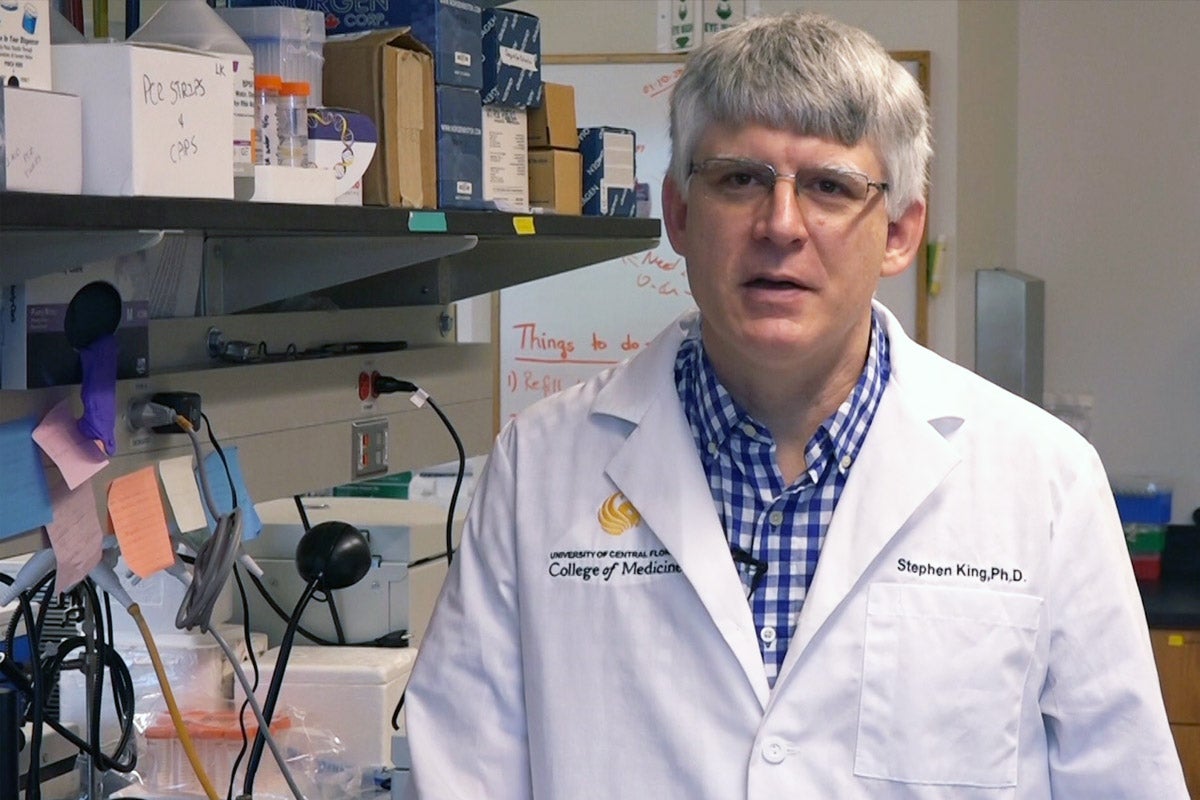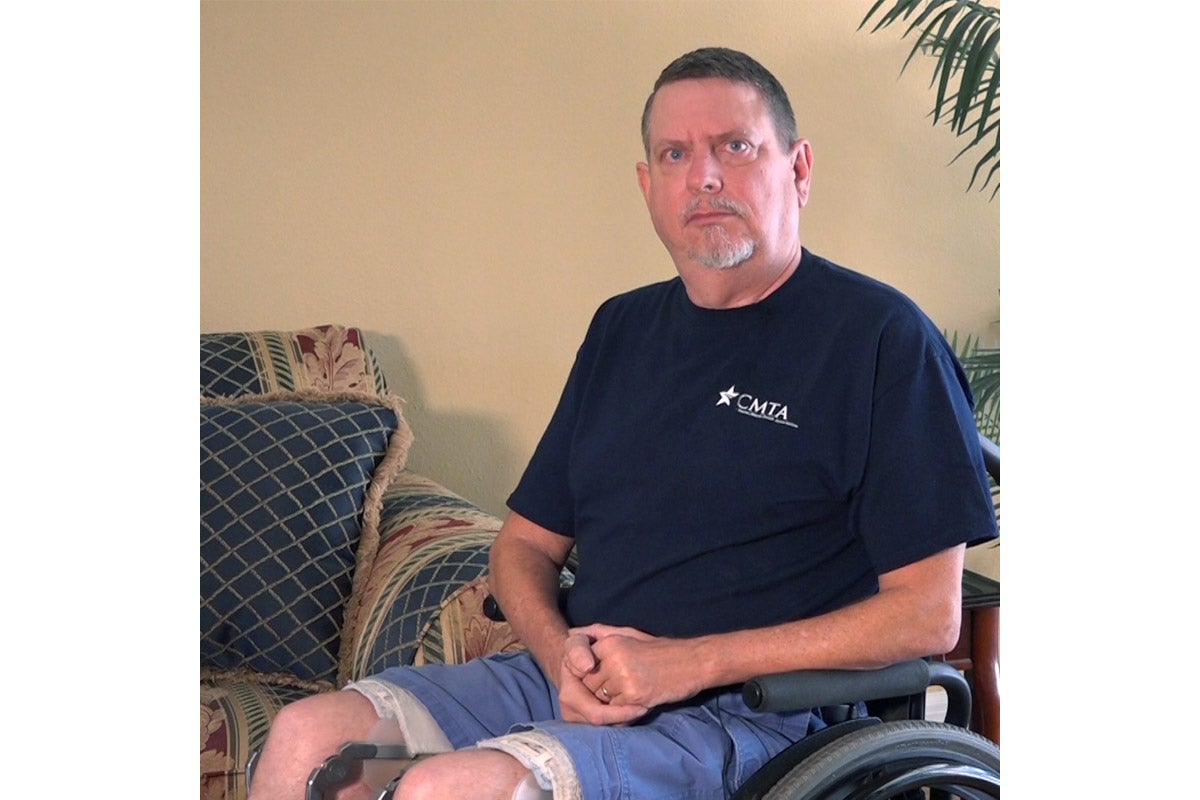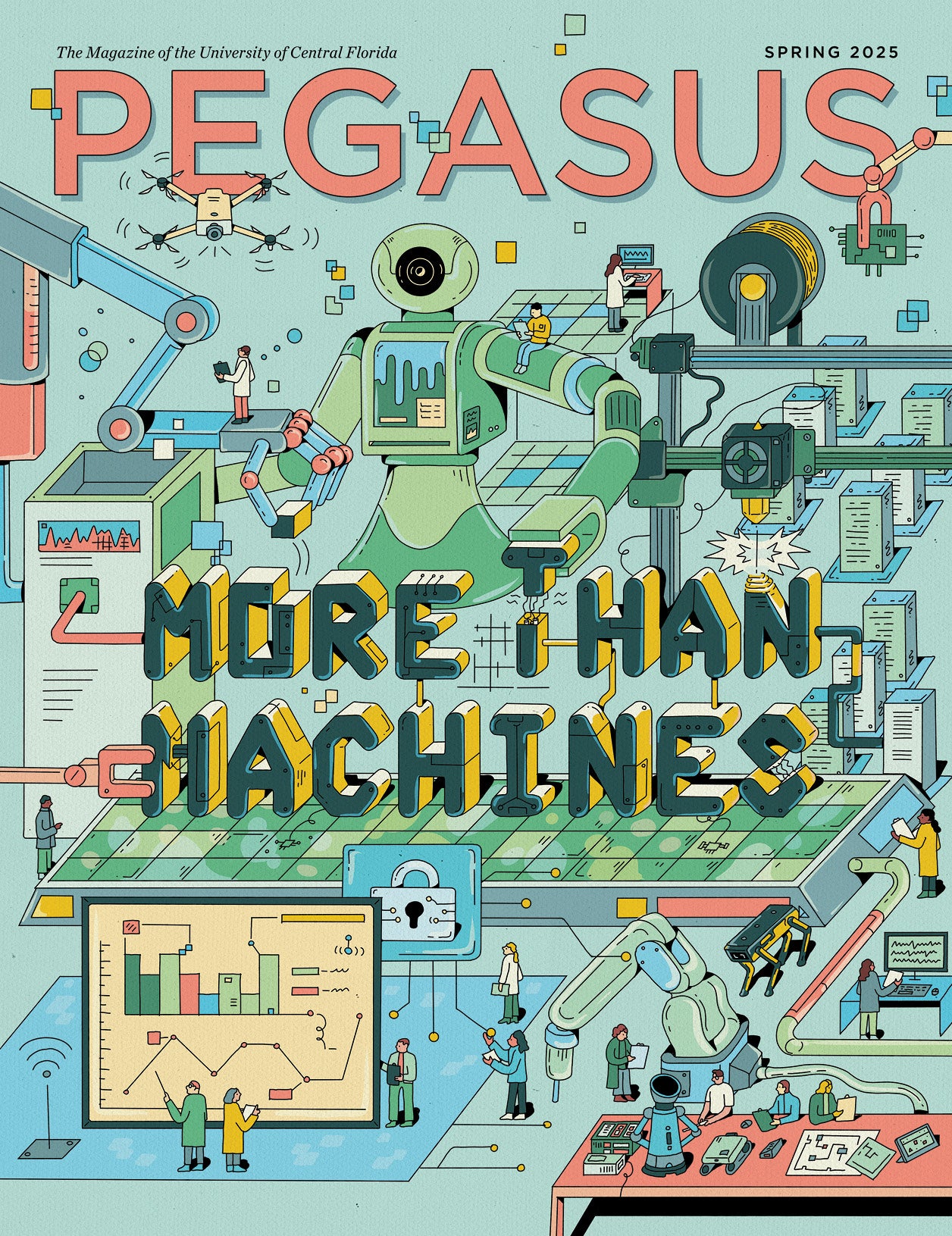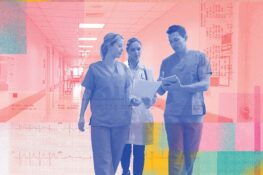Ed Linde always wore long pants as a young man to hide his skinny legs and cover the metal braces he had to wear, because of his condition.
Linde, a Tampa resident, is hopeful that a discovery made by a UCF medical researcher may provide hope to people like him and his son.
Linde suffers from Charcot-Marie-Tooth, a debilitating neurological disease that takes away a person’s mobility. Most people have never heard of it, but it affects one in 2,500 Americans, according to the National Institutes of Health. Linde’s mother, uncle, sister and niece have it. Most recently his 28-year-old son was diagnosed with it and has quickly seen his physical abilities deteriorate. There is no cure, it’s often misdiagnosed and doctors have no standard treatment for it.
“It’s one thing for me to have it, and I’ve accepted it,” Linde says. “But to pass it on and watch your child with the struggles and difficulties that come with it — it’s hard. It’s very easy to get depressed at a young age when you can’t do what you want to do. People my son’s age need to see that I don’t let the disease hold me back.”
Linde, a Tampa resident, is hopeful that a discovery made by a UCF medical researcher may provide hope to people like him, like his son.
A Breakthrough Discovery
Associate Professor of Biomedical Sciences Stephen King recently discovered that a deformity in the way motor neurons connect with muscles during a person’s first years of life may be connected to the peripheral nerve damage CMT patients eventually suffer. That nerve damage causes muscles to atrophy and normal movement to become difficult. CMT nerve damage is usually in the arms and legs, resulting in small, weakened muscles. Many patients have deformed feet, with high arches and hammertoes, which make walking difficult. Eventually, patients lose all their mobility.
King’s work is supported by a grant from the National Institutes of Health and his most recent findings were published earlier this year in the Scientific Reports journal.
“I think this may give us a better handle on understanding how the disease starts, and what may cause the ultimate degeneration later,” King says.
Linde’s symptoms began at age 5. He underwent physical therapy and wore splints at night. At 8, doctors fused the three joints of his ankle, leaving it difficult for him to walk. At 30, he received his first pair of leg braces. Later, he started walking with a cane, and now, at 60, he uses a wheelchair.
King said a genetic mutation in a cell protein called dynein is associated with CMT symptoms. Dynein normally helps move structures within cells, and it’s not yet clear what causes the gene to mutate. But that mutation causes malformations in the juncture between neurons and muscles. King was able to re-create the genetic mutation in his lab to see how CMT develops and causes worsening movement problems over time.

King’s work is supported by a grant from the National Institutes of Health and his most recent findings were published earlier this year in the Scientific Reports journal.
“It’s a common disease, but not one that’s regularly heard about,” Linde says. “There is no cure yet, but hopefully someday there will be.”
One of the challenges of CMT is that it is often misdiagnosed; doctors originally told Linde’s mother she had polio before diagnosing her with CMT. Today, Linde, a technical product manager, helps lead Tampa Bay’s Charcot-Marie-Tooth Association, which is dedicated to educating the public and physicians about the disease and raising money for a cure.
Linde has stayed active, but described the pain of watching his 28-year-old son’s disease progress so quickly. Linde is president of the Florida Wheelchair Bowling Association, rides a motorcycle and still enjoys dancing with his wife of 30 years, Vicki.
“When I couldn’t stand anymore, or walk, I went out and took wheelchair dancing lessons,” he says.
He’s cautiously optimistic that biomedical research like King’s will lead to better treatments for CMT patients.
“It’s a common disease, but not one that’s regularly heard about,” Linde says. “So we need to bring awareness of new medical research to our community. There is no cure yet, but hopefully someday there will be.”




